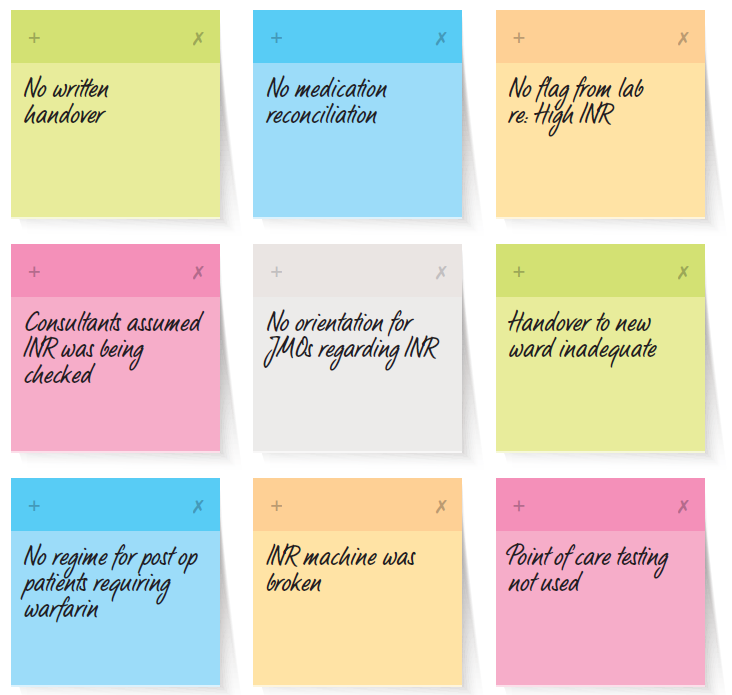Brainstorming
This quality improvement tool should be read in conjunction with:
Brainstorming can assist a team to quickly generate ideas. Teams may use brainstorming to determine the possible causes of a problem or solutions. Brainstorming is designed to think creatively as a team. Ideas are spontaneously generated by group interaction in a setting that actively encourages creativity. Even outrageous proposals are encouraged for their 'triggering' effect.
No ideas are rejected. Random words can be introduced in the brainstorming session to 'trigger' other ideas.
The features of brainstorming are:
- Use groups of up to 10 people who are directly concerned with the problem or process.
- There should be a facilitator in the group.
- The subject is clearly defined at the start of the session and can be reiterated during the brainstorming process.
- Ideas (words or brief statements) are generated rapidly and recorded.
- No ideas are rejected or criticised. 'Odd' suggestions are welcomed.
- Discussion is limited to explanation or clarification of a suggestion.
- Avoid criticism of ideas and dominance of particular staff.
- Encourage all staff to participate.
Brainstorming with sticky notes
Brainstorming in silence with sticky notes is one method to use to cut through the authority gradient and to control dominating staff. It also encourages all staff to participate and have an equal voice.
Steps
- Participants write (in silence) on sticky notes all their ideas relating to the topic i.e. 'causes of a problem'.
- one idea per sticky note
- use as many sticky notes as needed
- ideas need to be specific (phrases) e.g. 'Education' although a good idea, is not specific enough. It needs to be 'education not available to staff', 'education not available to patients', 'materials provided for education inadequate' etc.
- Place the sticky notes on a flat surface e.g. onto butchers' paper on a table or on a wall (see example in Figure 1).
Figure 1: Brainstorming with sticky notes the causes of the problem "Why patients are not on a standardised anticoagulation pathway".

If you are unable to physically sit around a table and brainstorm as a team, please consider using this tool to brainstorm virtually / remotely (the instructions for the use of this template are on the first slide)
Brainstorm Using 5 Whys Technique
The "5 Whys" is a technique to find the root cause of a problem. When teams are brainstorming in silence they can use the 5 Whys technique to try and drill down to the root cause of the problem.
- State the PROBLEM and ask 'WHY' does it exist?
- Document the ANSWER and ask 'WHY' does it exist?
Repeat 5 or more times until you reach the ROOT CAUSE.
In summary:
- When attempting to solve a problem, a common error is to stop too soon when you're hunting down the 'cause'.
- People keep taking the first or second simple answer, blinded by the symptoms or settling for the first 'apparent' cause.
- The first 'cause' offered is almost never the real root cause.
- And it's only when you find the real cause/s - not just symptoms - that you can take really effective action to remove the cause and prevent the problem cropping up again.
- It's important to note that the purpose of the 5 whys isn't to place blame, but rather to uncover the root cause of why something unexpected occurred.
Source: Mapwright
To learn more about the 5 Whys please refer to the Institute for Healthcare Improvement (IHI) website.
You may need to take a moment and register with the IHI for more in-depth information.
To learn more about Brainstorming, Affinity Diagrams and Multi Voting, please refer to the IHI website.
Feedback
Was this quality tool web page useful? Do you have suggestions on how we might make it even better?
Please provide us with your feedback via this short evaluation survey.
